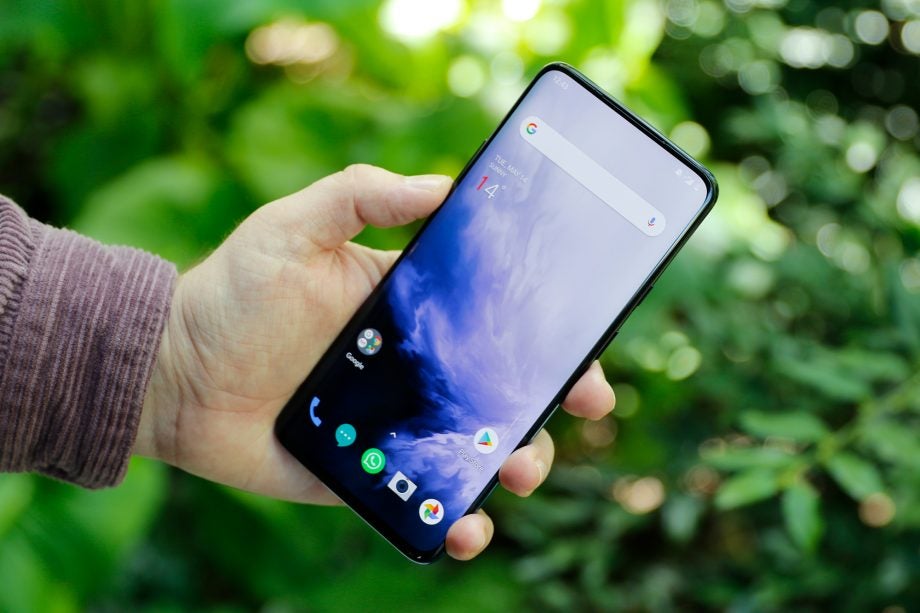OnePlus 7 Pro: Every phone should have a Fluid AMOLED screen, here’s why

It’s happened. The OnePlus 7 and OnePlus 7 Pro are finally here. But unlike past OnePlus phones, the big news isn’t about how good value for money the handsets are. With pricing starting at £649 for the OnePlus 7 Pro, that ship has sailed, and the company is well and truly in flagship, Galaxy S10 territory.
But that doesn’t mean OnePlus has fully made the transition to being “just another smartphone maker” with its latest flagship OnePlus 7 Pro for one key reason: The phone has a 90Hz “Fluid AMOLED” display. To non-techies this doesn’t sound like much, but for me, and anyone that’s used a phone with a higher than 60Hz screen, it’s a huge deal. Here’s why.
Related: OnePlus 7 Pro review
Starting with the basics, Hz (Hertz) is a measurement of a screen’s refresh rate. It determines how many times a second a screen displays an image. So a 30Hz screen will display 30 frames per second, a 60Hz will show 60 frames per second and so on and so on – you get the idea.
Related: Best smartphone
Most phones are locked to display at 60Hz which is viewed as the industry standard for most monitors and TVs. The advantage of being able to go higher than 60Hz is that by displaying more frames per second, basic things like navigating menus will look smoother, and interactive apps and games will feel more reactive and enact touch inputs faster.
This is because there are shorter gaps between when you touch the screen and the input is rendered. This is why PC gamers have always favoured monitors with 120Hz or 144Hz screens. The only downside to the tech is the impact it has on the battery. This is because increasing the number of images per second a screen shows requires more juice.
I can already see tech-enthusiasts and Razer fans rolling their eyes saying “sure that’s all true, but OnePlus isn’t the first company to do this”. That’s a completely valid point. Razer was the first company to do this with its first generation Razer Phone, which had an even higher 120Hz display. Asus has also pulled the same trick with its ROG Phone, which has the same 90Hz refresh rate as the new OnePlus handsets.
Related: Best Android phones
The Razer Phone and second generation Razer Phone 2 also debatably deploy the tech better as they come with a custom 30Hz screen mode and auto switching feature, which lets the screen intelligently tweak the refresh rate depending on what you’re doing. The OnePlus 7 Pro only switches between 60Hz and 90Hz modes, which is an annoyance. The lower 30Hz mode is an advantage that lets the phone save battery when running processes mastered at lower fps counts, like movies, which are generally are shot in 30fps.
But for me the OnePlus 7 Pro’s screen is the bigger deal as it’s the first “mainstream” flagship to experiment with higher refresh rate screen tech. Since the first generation Razer Phone launched I’ve been steadfast in my argument that every smartphone should have a variable refresh rate screen. I stand by that. But as long as the tech was limited to gaming-focused, niche products this would never happen.
The fact OnePlus has done it changes everything. The company may continue to argue it’s a startup, but as the OnePlus 7 launch shows, this simply isn’t the case. OnePlus is now one of the big players and that’s something competitors like Samsung and Apple can’t ignore. So if OnePlus adds a great feature like a 90Hz screen, at the very least, other vendors will explore the option and almost certainly add it if it proves a hit on the OnePlus 7 Pro.
This means OnePlus’ move could and, in my mind, will have a wider effect on the smartphone community as a whole, and we’ll see an influx of new flagships with variable refresh rate screens, which would be a great development for consumers across the board. The only downside is that it’s likely too late for the trend to start this year. We’ll probably have to wait until next year when we’re talking about the iPhone 12, not iPhone 11, before we see the wider ramifications of OnePlus move to take effect.


